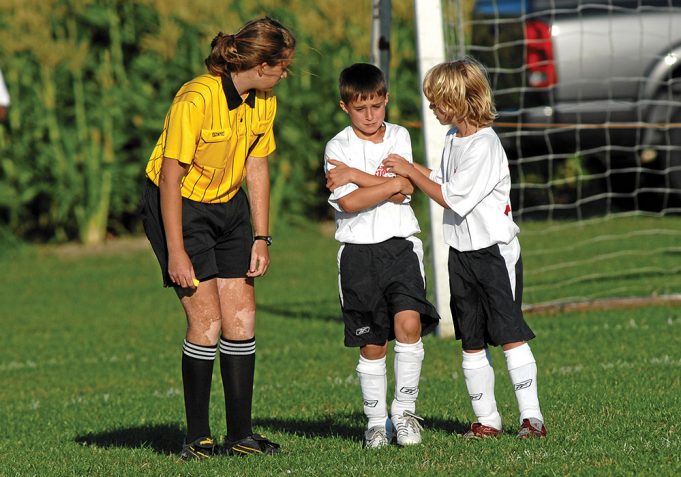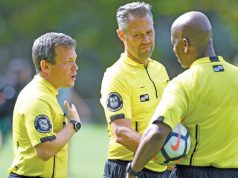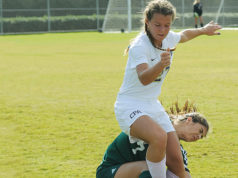One might think that leaving the field is such a simple, straightforward and obvious act as to not need anything further said about it. One would be wrong.
Basically, a player needs your permission to leave the field. It cannot be given by or delegated to anyone else. Yet players leave the field in many different ways, for many different purposes, and at many different times without that permission — often without violating the Law.
For example, players leave the field at halftime and no one even thinks about needing permission. Is it because halftime is a stoppage of play? Maybe. Then what about a player retrieving a ball because it left the field? No one asks for or needs permission to do this but, on the other hand, halftime isn’t actually a “stoppage of play,” but rather a planned break in play where the ball leaving the field is an actual stoppage — provided for but not planned under Law 9. In the case of a serious injury stoppage, the player receives implicit permission to leave because the Law requires it.
And then there are stoppages for fouls or misconduct during which a substitution is allowed. Is permission to leave required then? Actually, yes. We all know that the substitute requires permission to enter but many referees forget that Law 3 also requires permission for the exiting player. Referees get by in this case without expressly giving it because, by idly waving their hand to OK the substitution request, they have in effect given both permissions. It’s sloppy but common and can occasionally lead to problems.
Then there is the concept of “in the course of play” for which the Law allows a player to leave the field without permission even during play (and also to re-enter without permission) if, in your opinion, the player’s departure is brief, closely connected to and explained by the circumstances of play at the time (e.g., to avoid an opponent or to retrieve a ball), and the player does not thereby gain an unfair tactical advantage by the manner or timing of his re-entry. On the other hand, the traditional interpretation of this sort of scenario explicitly excludes leaving the field in an attempt to place an attacker in an offside position (it doesn’t and it’s cautionable).
Know when permission is required to leave the field
Players leaving the field for a substitution appear to believe that they must exit at the touchline near the midfield line. Most coaches, and even many referees, believe this also, even to the point of demanding that this is where the player must leave the field. Under the Law, however, this is neither required nor even expected. Does it make any difference? Sometimes.
Think back to the number of times you stood tapping your foot while a fullback walks (or often ambles) 95 yards (the approximate distance from the far corner to the traditional midfield “exit” point) and you just know this is being done solely to waste time to gain an unsporting advantage. Yes, there is the option of adding time but this is often not permitted in tournaments and, in any event, the added time rarely fully compensates the immediate harm done to the opposing team. It is well within your authority, however, to insist that any player appearing to be wasting time in this manner leave instead at the closest point on the closest boundary line (at the risk of being cautioned for delaying the restart, if necessary).
Know when permission is required for a player to leave the field. That permission requirement is one of the safeguards that assists you in keeping track of who is a player “of record” and who is not. Recent Law changes since 2016 giving “foul status” to acts committed by rostered nonplayers nevertheless distinguish between players and nonplayers when it comes to the location of the restart.
What's Your Call? Leave a Comment:
Note: This article is archival in nature. Rules, interpretations, mechanics, philosophies and other information may or may not be correct for the current year.
This article is the copyright of ©Referee Enterprises, Inc., and may not be republished in whole or in part online, in print or in any capacity without expressed written permission from Referee. The article is made available for educational use by individuals.

















